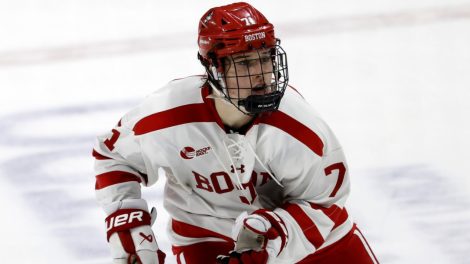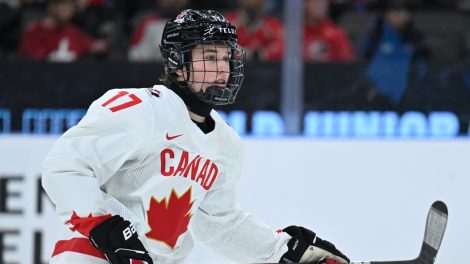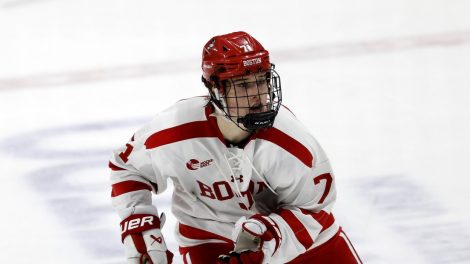If the Toronto Maple Leafs are granted their ultimate reward any time soon, the past five years or so will be looked upon as the golden era in their draft history.
After decades when the Leafs typically peed down their leg on draft night, over the past few years Toronto has consistently knocked their picks straight, high and over the wall in dead centre.
In 2012 they overlooked Morgan Rielly’s draft year knee injury and made him the fifth pick overall – under the Brian Burke regime, mind you – from the Moose Jaw Warriors. The next year was a bit of letdown as they took Frederik Gauthier 21st overall, but after that?
Jackpot: William Nylander at No. 8 in 2014; Mitch Marner at No. 4 in 2015 and the piece de resistance: Calder Trophy winner Auston Matthews at No. 1 in 2016. Go back a couple of more years and there’s Nazem Kadri at No.7 in 2009, another high-end, home-grown talent playing a key role on a team with ambitions of being a Stanley Cup contender sooner than later.
Those are the returns you might expect when you are picking that high, but to hit on four essential franchise building pieces in the space of five years and five in eight? That’s how a Stanley Cup winner gets built – hit after hit after hit in the draft, the essence of successful team building in the salary cap era.
Now comes the hard part. The Leafs unexpected playoff run in 2016-17 dropped Toronto into the middle of the first round, No. 17 overall. If the Leafs core of young talent continues to mature, their spot in the first round will continue slide. It’s the price of success; no more low-hanging fruit.
Translation? The easy work is done. Getting the kind of athlete that can help push the Leafs forward will either require luck – selecting a player that develops faster and with a greater impact than his draft position might suggest — or patience – a player who after some additional years of care and seasoning eventually contributes.
Exactly where Timothy Liljegren fits in that continuum remains to be seen. The Leafs made the 18-year-old Swedish defenceman the 17th pick in the first round of Friday night’s NHL draft. At 6-feet and 192 pounds, Liljegren models his game after Erik Karlsson and Drew Doughty, which is to say he’s comfortable carrying the puck and making plays, but that at this stage his best defense might be his offence. He slid down draft boards after being ranked as high as No. 2 player in his class at the beginning of the year, but some of that is attributable to a battle with mononucleosis that sapped his strength and energy.
“He’s a talented young man and when he fell that far it was a no-brainer,” Leafs assistant general manager Mark Hunter told Sportsnet’s Elliotte Friedman.
“He had mono for eight weeks, he was out for a long period of time and anybody that’s had mono knows how much it takes out of your body. When he got back going it took some time, but he’s an elite talent, an elite skater and can move pucks and Toronto Maple Leafs fans will really enjoy him.”
There’s no disputing he’s got the tools, but the idea of him breaking into the Leafs increasingly deep and talented lineup anytime soon is far-fetched, which is no particular fault of Liljegren’s.
The quick returns that the Leafs have received from Rielly, Marner and Nylander, who each spent one season after their draft year maturing before breaking into the lineup of what were at that point weak Leafs rosters – let alone Matthews who memorably scored four goals in his first NHL game the month after he turned 19 – are a thing of the past.
If everything works out according to the Shanaplan, teenagers won’t be looked upon to make the lineup for some time to come. Which doesn’t mean the contributions of Liljegren’s couldn’t be every bit as vital as what the Leafs quintet of top-10 picks will be over the next few years.
The Pittsburgh Penguins go as top draft picks Sidney Crosby and Evgeni Malkin go, but their status as a salary cap mini-dynasty has been helped along by the likes of Kris Letang emerging as an elite defender after being taken 62nd overall in 2005, or – more recently – Olli Matta taken No. 22 in 2012.
Similarly the key to the Chicago Blackhawks’ Stanley Cups wasn’t only that they got franchise players Jonathan Toews third overall in 2006 and Patrick Kane No.1 in 2007, it’s that they were able to get cornerstone defenders Duncan Keith 54th overall in 2002 and Niklas Hjalmarsson in the fourth round in 2005.
[snippet id=3317857]
Choosing 17th overall is hardly wasteland. Done properly, Leafs management should be able to turn a mid-round, first-round selection into a serviceable player or perhaps something much more.
But the likelihood of success and the length of time it might take for it be realized is of a different category than the quick and lasting profits the Leafs have gotten in recent years picking near the top of the draft.
Yet the Leafs hopes of building a contending team with staying power will depend on players like Liljegren turning from prospects to pros just as assuredly as his peers taken earlier on draft night’s past.






